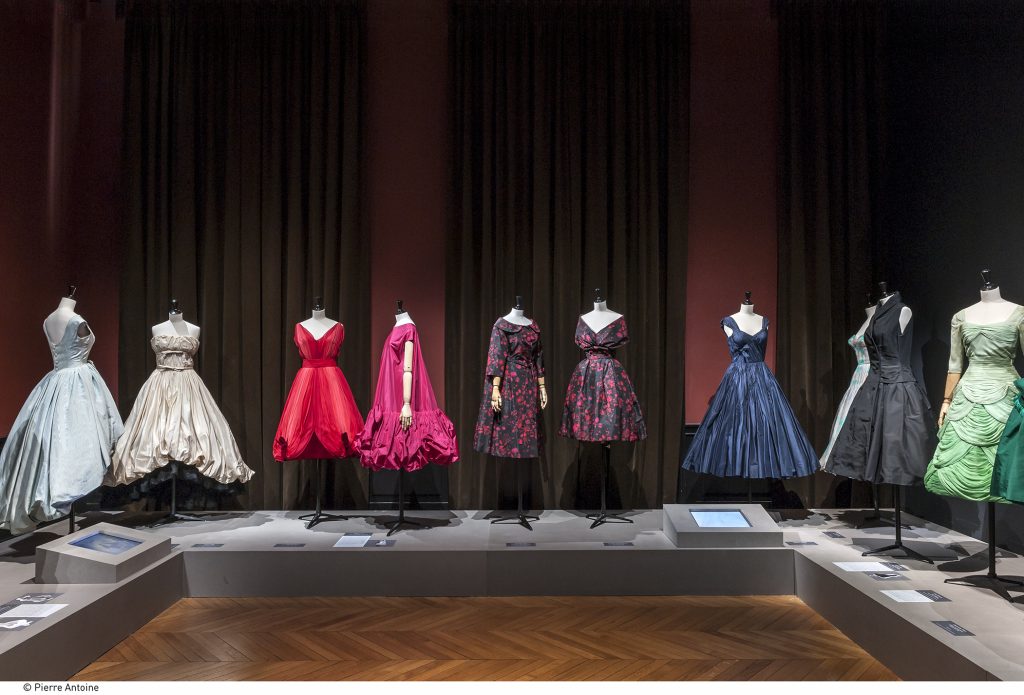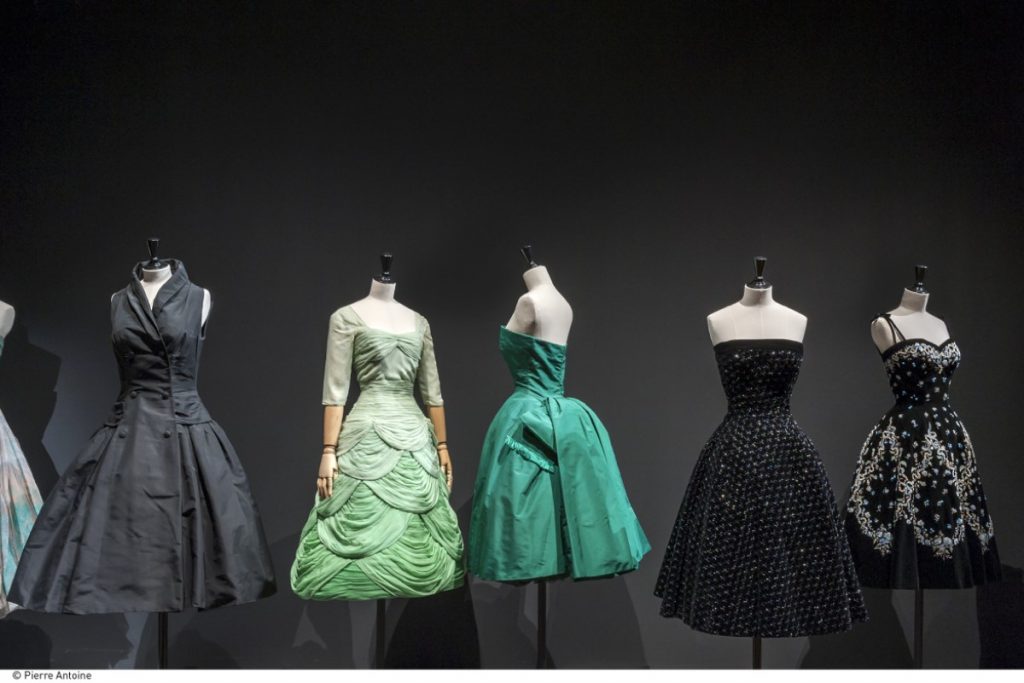Les Anneés 50s,1947-1957. The 50s Fashion in France, 1947-1957
Basques, petticoats, corolla skirts, pointed shoes, bright-coloured floral and striped prints, wasp-waist suits with straight skirts, strapless sheath dresses, cocktail dresses, rock crystal embroidery: such was the couture of the fifties. At the same time, though, a more relaxed style – close-fitting pullovers, pedal pushers, jeans – was being adopted by the baby boom generation.
Early in 1947, Christian Dior launched his fashion house’s first collection. The war had come to an end and with it the image of the ‘soldier girl with a boxer’s build’. In her place came Dior’s ‘woman-flower’, with prominent bust, cinched waist, flat stomach, rounded hips and very full skirt. Immediately dubbed the ‘New Look” by Harper’s Bazaar editor in chief Carmel Snow, the “hourglass” figure and its extravagant demand for fabric created a furore – but also met with the instant, dazzling success that made it the emblem of the decade.
Other competing styles were just as remarkable: Balenciaga’s ‘barrel’ line with its flared back and waist; and, at the opposite pole from the New Look, the dramatically innovative Chanel line of 1954 with its simple, straight suits. The 1950s were a decisive period for French haute couture, which had suffered badly in the wake of the 1929 stock market crash and the war and was now reborn and made eternal. The list of names says it all: Jacques Heim, Chanel, Schiaparelli, Balenciaga, Jacques Fath making up the old guard; followed by newcomers Pierre Balmain, Christian Dior, Jacques Griffe, Hubert de Givenchy and Pierre Cardin. Paradoxically the dominance of French fashion hinged not only on the prestige of names that spelled luxury, elegance and originality, but also on the profession’s willingness to make the revolutionary move into ready-to-wear.
In 1954 the ‘Couturiers Associés‘ – Jacques Fath, Robert Piguet, Paquin, Carven, Jean Dessès – founded the first haute couture ready-to-wear licensing company . Drawn from the Palais Galliera collection and sporting the labels of the most famous couturiers as well as others now forgotten (Jean Dessès, Madeleine Vramant, Lola Prusac), the remarkable pieces making up this exhibition – some 100 models and accessories – retrace the evolution of the female form through the decade 1947–1957: from the birth of the New Look to the death of Christian Dior and the advent of Yves Saint Laurent. In the 1950s haute couture and ready-to-wear were one of France’s major economic sectors and a veritable fashion breeding ground. This was haute couture’s golden age, when Paris regained its title of world fashion capital.
In partnership with METRONEWS, OBSESSION, STYLIST, VOGUE PARIS, FRANCE 5, FRANCE INTER / FNAC, TROIS COULEURS
Images Courtesy of Palais Galliera © Pierre Antoine


